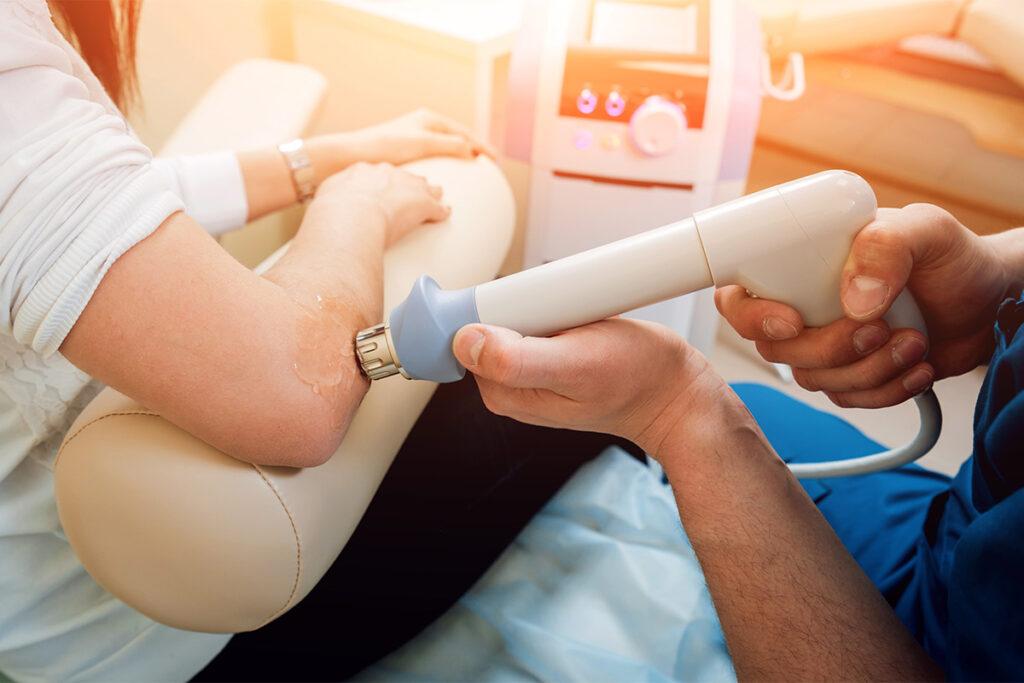Scottdale Rehabilitation & Wellness Center is Restoring Your Health
Scottdale Rehabilitation & Wellness Center in Scottdale, PA explains the differences between cold laser vs. ultrasound in this month’s blog. There are a variety of ways to recover once you suffer an injury. Cold laser and ultrasound therapies have grown in popularity in relieving pain and healing tissue. Our therapists provide cold laser ad ultrasound therapy at our facility. Let’s take a look at the differences between these two rehabilitation options.
What is Cold Laser Therapy?
Cold laser therapy, or low-level laser therapy (LLLT), is a non-invasive treatment. Cold laser therapy employs low-intensity lasers or light-emitting diodes (LEDs) to stimulate healing and reduce pain. It’s generally for muscle strains and tears, joint conditions, and chronic pain. Some of the common benefits:
- Pain Reduction: Cold laser therapy helps alleviate pain by promoting the release of endorphins and reducing inflammation.
- Tissue Healing: It accelerates tissue repair and cell growth, making it an effective choice for soft tissue injuries.
- Non-Invasive: Cold laser therapy is painless and non-invasive, with no known side effects.
- Short Treatment Sessions: Typically, sessions are relatively short, lasting from a few minutes to around 30 minutes.
Ultrasound Therapy Generates Deep Heat in Muscle Tissues
Ultrasound therapy involves the use of high-frequency sound waves to generate deep heat within the body’s tissues. This heat promotes circulation, reduces muscle spasms, and accelerates the healing process. Ultrasound is a great option when you need to treat tendonitis, joint stiffness and soft tissue injuries. Let’s look at some of the most common applications.
- Deep Tissue Penetration: Ultrasound therapy can target deep-seated tissues and muscles, making it effective for a wide range of conditions.
- Muscle Relaxation: It helps relax tight muscles and reduce muscle spasms.
- Increased Blood Flow: The heat generated by ultrasound increases blood circulation, which is essential for tissue repair.
- Versatile: Ultrasound therapy is a treatment for both acute and chronic conditions.
Choosing Cold Laser vs. Ultrasound Should Depend on Your Situation
The choice between cold laser therapy and ultrasound therapy depends on various factors, including the patient’s condition and treatment goals. Here are some considerations:
Depth of Treatment: If the injury or condition requires deep tissue penetration, ultrasound therapy may be more appropriate due to its ability to reach deeper layers.
Pain Management: For pain management and inflammation reduction, both therapies can be effective, but cold laser therapy may be more suitable for certain patients.
Tissue Healing: If the primary goal is to accelerate tissue healing and cell regeneration, cold laser therapy is a strong contender.
Patient Preferences: Some patients may prefer one therapy over the other based on comfort and personal preferences.
Therapist’s Expertise: The therapist’s familiarity and experience with each therapy can also influence the choice.
For more information on gait and balance in elderly people, call Scottdale Rehabilitation & Wellness Center at (724) 887-6615. Follow us on Facebook for updates. We are happy to discuss more about gait and balance in elderly people.

